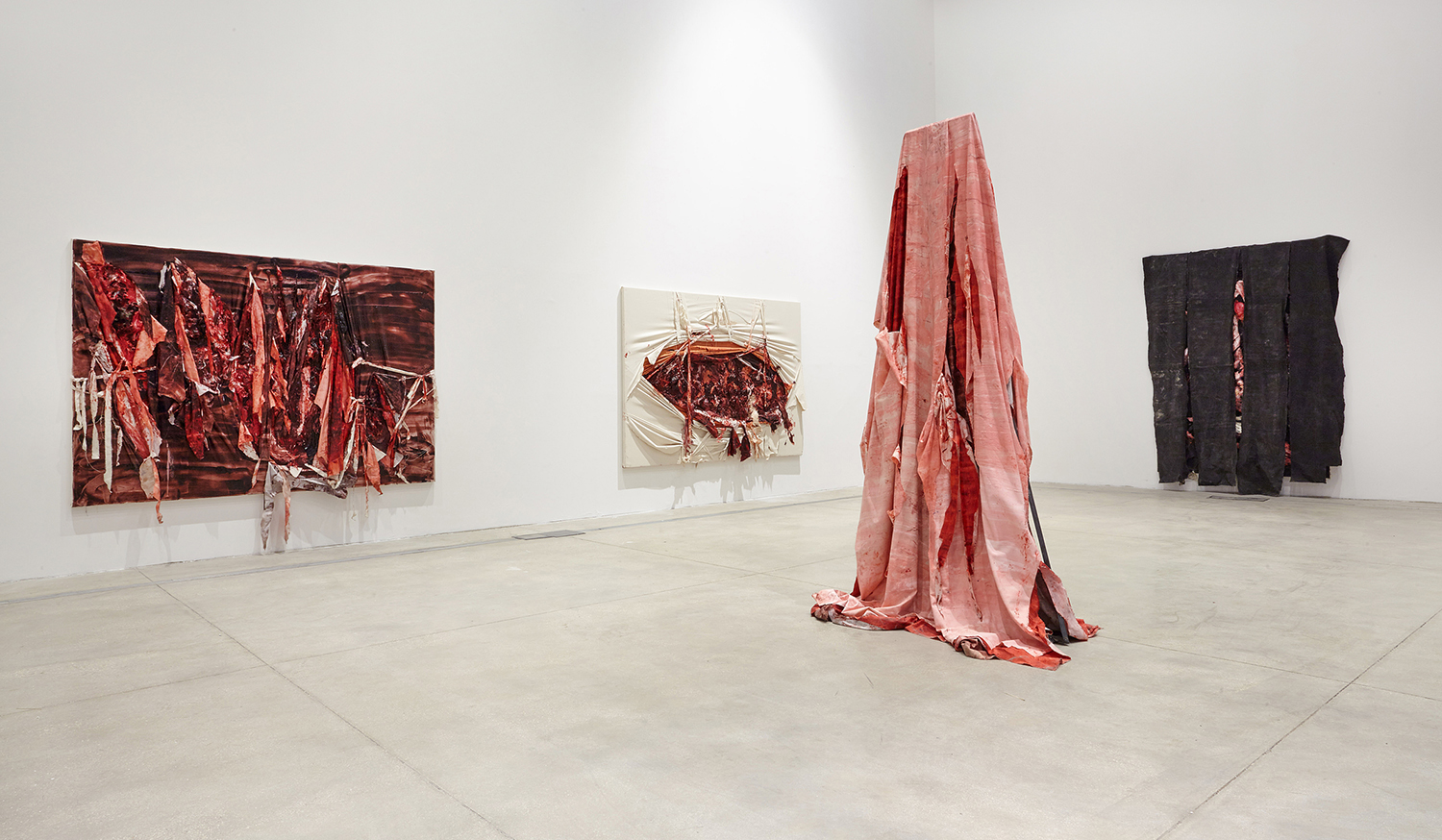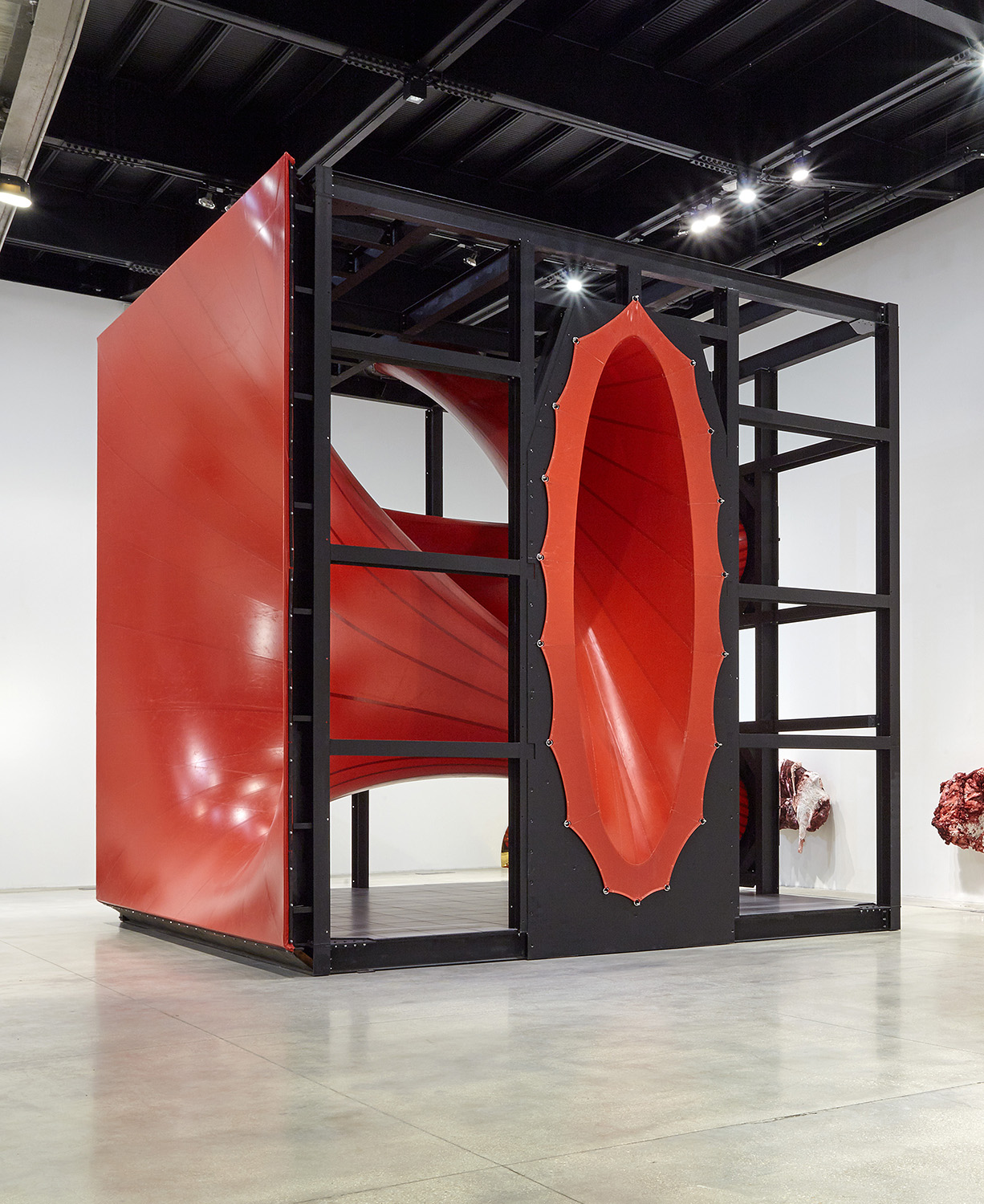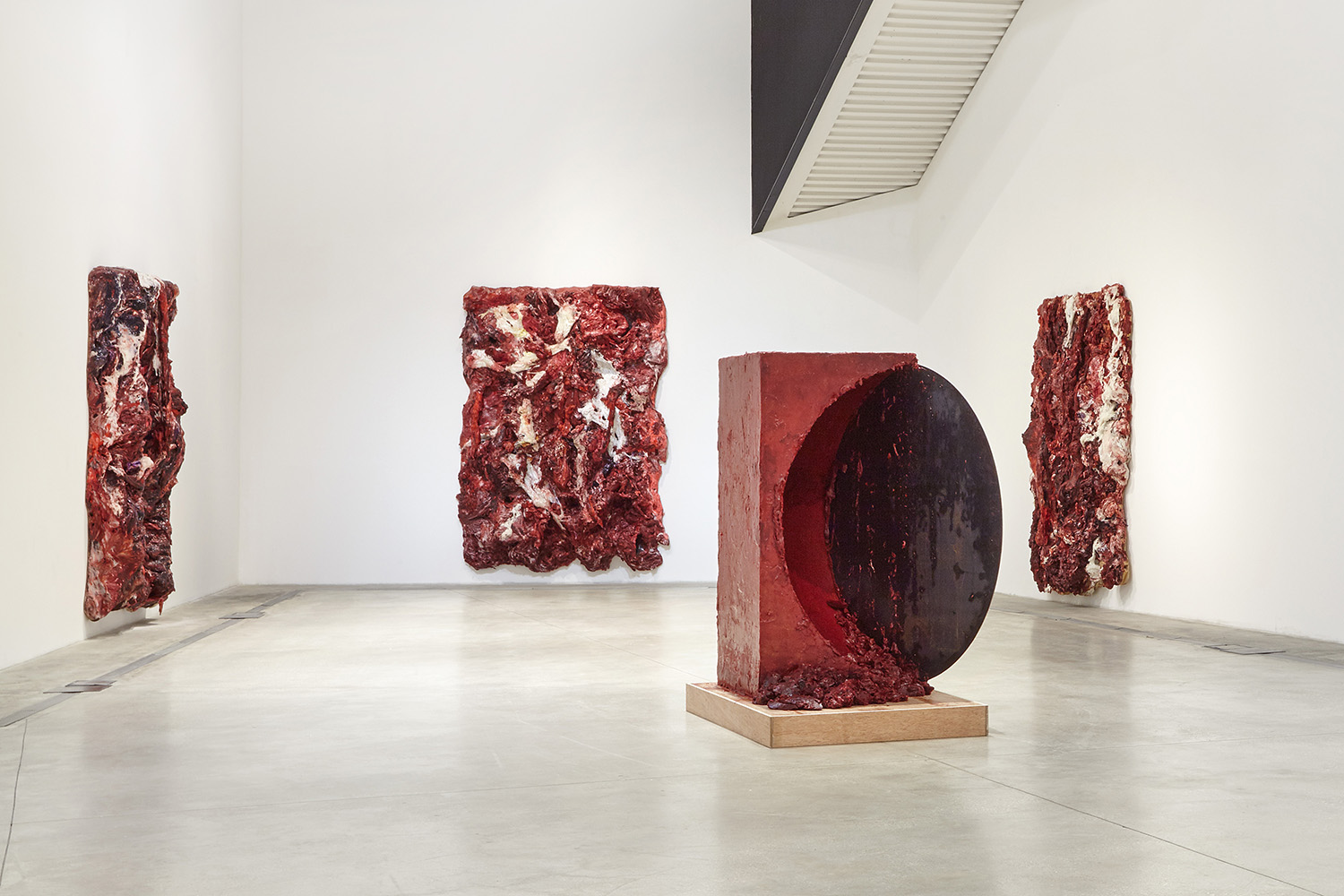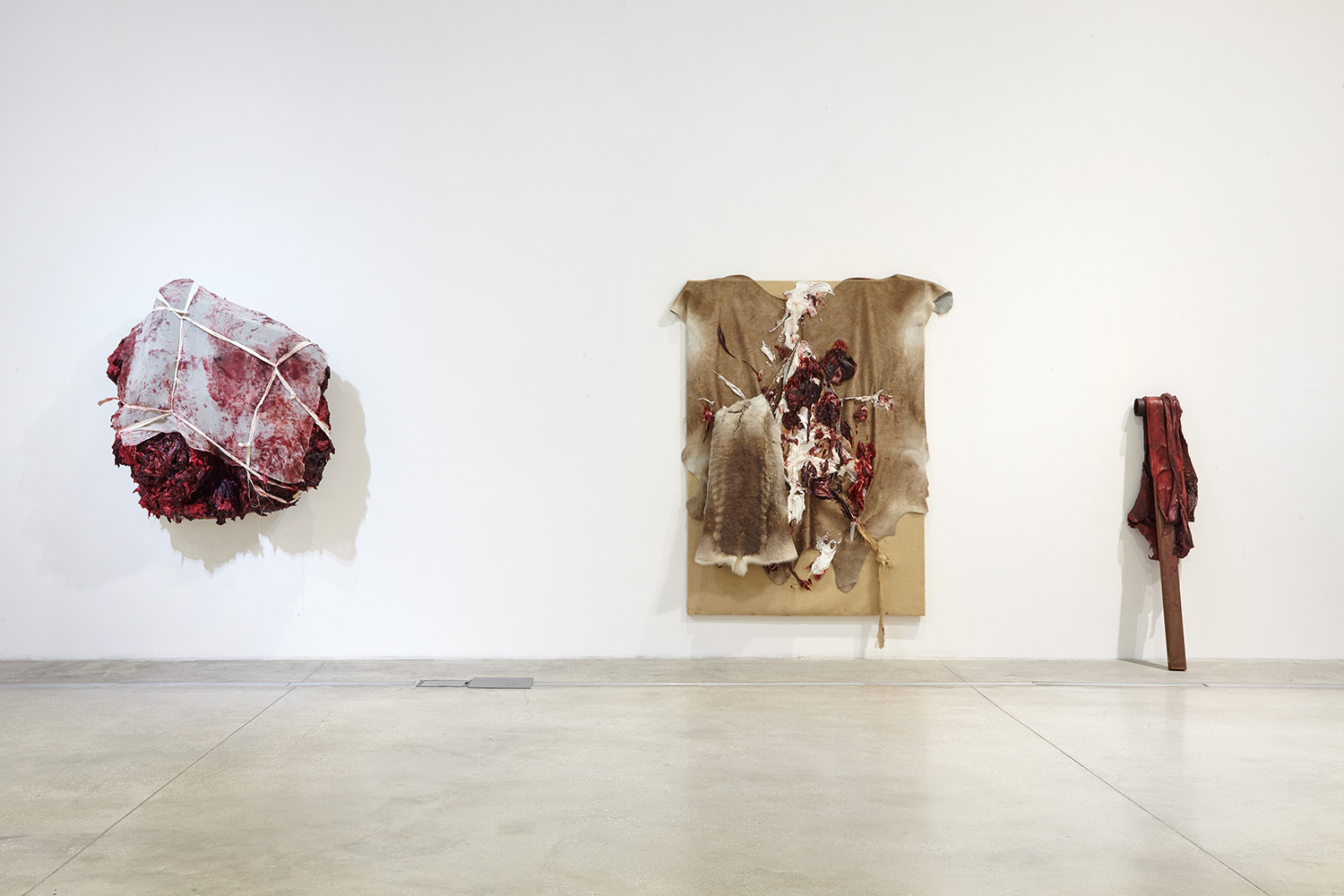Anish Kapoor at the Museum of Contemporary Art of Rome
By Alessandra Alliata Nobili

Installation view of ANISH KAPOOR’s exhibition at Museum of Contemporary Art of Rome (MACRO). Courtesy MACRO.
Renowned Indian-born, British artist Anish Kapoor has expanded the definition of contemporary sculpture with immersive and enigmatic abstract pieces that engage both the phenomenological and unconscious aspects of human experience. Kapoor had a cosmopolitan upbringing that infused his work with a syncretic mix of Western and Eastern culture and philosophy. Born in Bombay (now Mumbai) in 1954, the artist spent his adolescence in Israel and moved to London in the early 1970s, where he still lives and works.

ANISH KAPOOR, Sectional Body preparing for Monadic Singularity, 2015, PVC and steel, 7.32 × 7.32 × 7.32 m. Courtesy Museum of Contemporary Art of Rome.
Kapoor began his artistic career in the early 1980s, testing the perceptual effects of color intensity with geometric objects coated in bright, powdered color pigments. Increasingly working on a larger scale, the artist has achieved fame with colossal pieces that blur the line between art and engineering. In 2002, he charmed London audiences with Marsyas, a commission for Tate Modern, consisting of a colossal, trumpet-shaped membrane of crimson PVC, stretched across the entire length of the Turbine Hall, described by the artist as “like a flayed skin.” The work was inspired by the Greek myth of the satyr who was flayed alive for challenging the god Apollo to a flute-playing contest.
Marsyas’ myth keeps resurfacing in Kapoor’s work, and relates to his ongoing interest in the skin as an edge between the body and the world, as well as a fascination with the inner workings of the human body. These overarching themes took an ominous hue in the artist’s latest show at the Museum of Contemporary Art of Rome (MACRO) where images of flayed, raw flesh were abound. The exhibition marked the artist’s first return to an Italian museum in 10 years, bringing together 30 works produced since 2005.
Kapoor’s trademark color of red was profuse, most notably in Sectional Body Preparing for Monadic Singularity (2015), an impressive centerpiece of the show, which was first exhibited during Kapoor’s exhibition in 2015 in the gardens of the Palace of Versailles, near Paris. The piece is a seven-meters-high, hollow cube with elliptical openings on three sides, one of which takes up an entire facet of the cube, recalling a giant corolla. The openings are internally connected by taut, wormhole-like tubes of bright-red, smooth PVC membranes, which elicit associations with arteries and blood vessels.

Installation view of ANISH KAPOOR

ANISH KAPOOR, (back) Internal Object in Three Parts, 2013
On show were also Kapoor’s recently produced hybrids of painting and sculpture made of thick layers of red and white silicon, which appear to be scooped up from the support’s surface with enormous vigor. As a result, the material appears deeply gouged, and the clumps and filaments in the glossy mass recall exposed tendons and organs. Internal Object in Three Parts (2013–15), a triptych of large rectangular wall-mounted pieces, was previously shown at the Rijksmuseum in Amsterdam in a room across Rembrandt van Rijn’s masterpieces. These works, Kapoor explained on that occasion, engage with art historical representations of flesh in painting, such as Rembrandt’s Slaughtered Ox (1655), which Kapoor greatly admires. Though disquieting, these works have a powerful pull, literally taking the lusciousness of Baroque painting to its extremes while conjuring up trauma or torture.
Titles like Hung (2016), Dissection (2012) and Apocalypse and Millennium (2013) similarly evoke a grievous human fate; in two rectangular-shaped wall pieces entitled Flayed I and Flayed II (both 2016), a hessian cloth is pulled from the support’s surface and hangs loose, literally as a flayed skin.

Installation view of ANISH KAPOOR
A set of arresting of sculptures entitled Gethsemane (2013) conjures the image of dissected internal organs or arteries. The work consists of three large-scale parallelepipeds in red resin, one placed upright and the other lying horizontally, carved with smooth protruding blobs and deep, rough cavities opening as in a meandering coral formation. Circling around the sculptures, one feels compelled to peer into the crevices of this uncanny bodily landscape.
Overall, the exhibition at MACRO conveyed Kapoor’s engagement with human mortality and suffering that powerfully resonated with contemporary social realities of suffering and atrocities. It also testified to his great talent to weave new content into the many strands of thought that have characterized his career for over 30 years, experimenting with new forms and materials to keep his work highly original.
Anish Kapoor’s eponymous exhibition is on view at the Museum of Contemporary Art of Rome until April 17, 2017.








